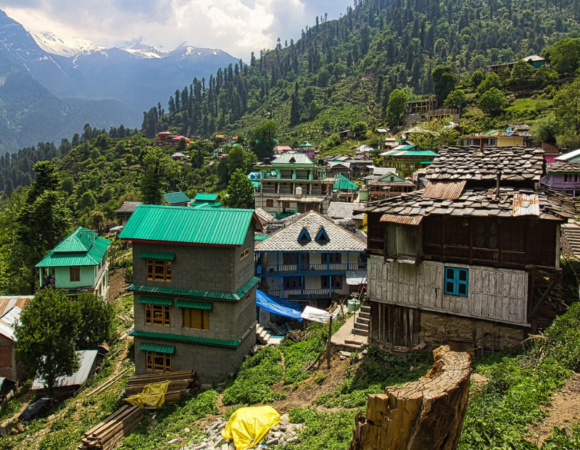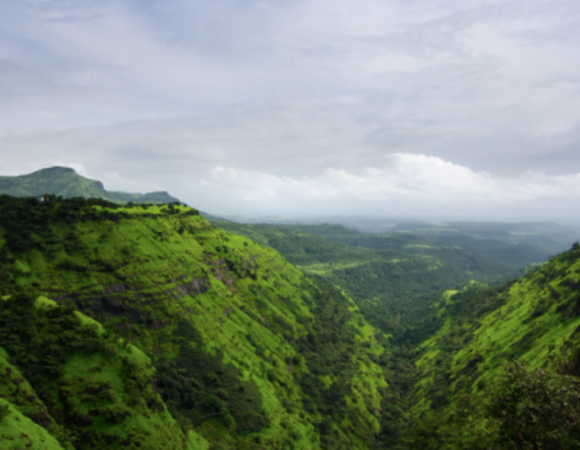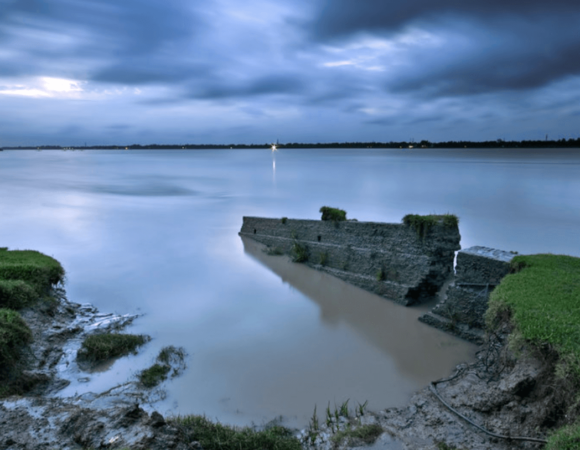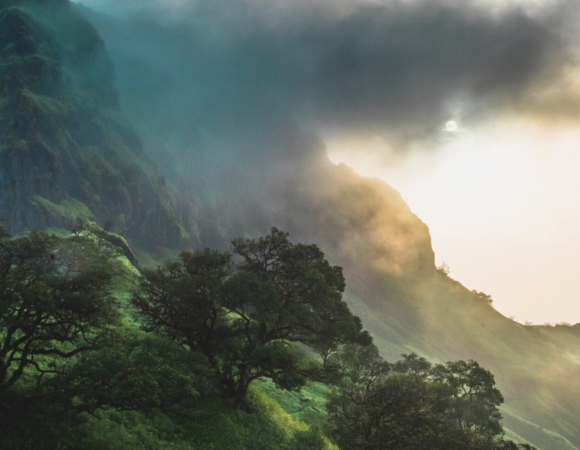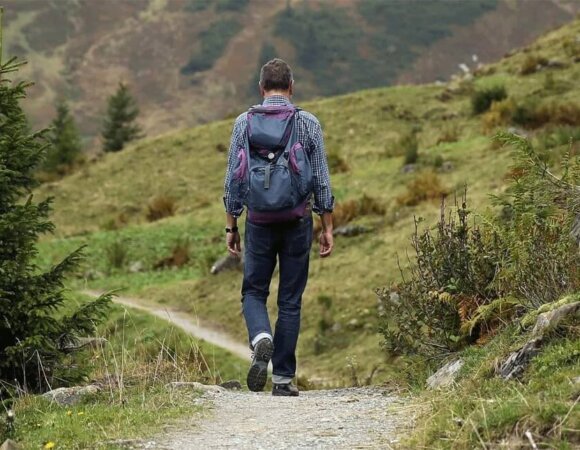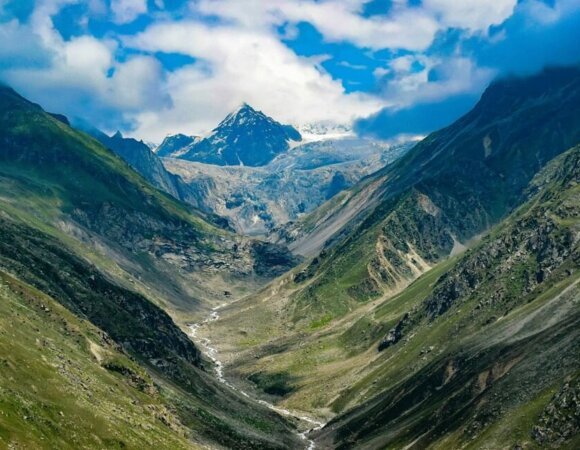Nag Tibba Trek Guide 2024: History, Highlights, Best Time, How to Reach and Itinerary
Table of Contents
ToggleThe tallest mountain in the lower Himalayas of the Garhwal area near Mussoorie is Nag Tibba, which is translated as Serpents Peak. It also provides its name to the Nag Tibba Range, one of the three Lesser Himalayan mountains (the other two being Dhauladhar and Pir Panjal). It has long been thought to be the home of the Snake God, or ‘Nag Devta‘.
Local villagers make the journey to the mountain regularly to pray to the Snake God to preserve their animals from venomous snakes. Because of its spectacular charm and high elevation, this location has drawn hikers and adventure seekers. Trekkers may enjoy breathtaking views of different peaks from the Nag Tibba trek, including the Bandarpunch mountain, the Gangotri group of summits, the Kedarnath peak in the north, Doon Valley, and the snow peaks of Chanabang.
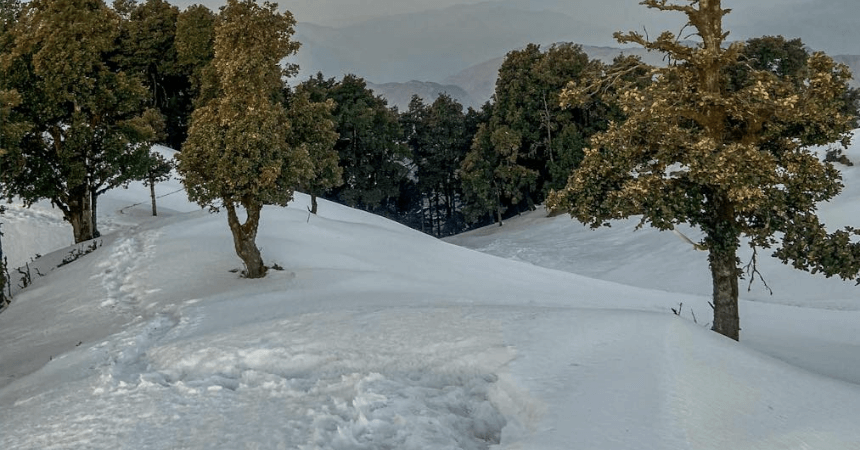
It is one of the greatest Saturday treks that can be undertaken by both novice and experienced hikers. A modest temple is situated on top of a hill, from where magnificent views of the whole Bandarpunch mountains of the Great Indian Himalayas towards the Yamunotri side can be seen.
Nag Tibba trek is a great area to camp during spring and summer, and it’s also one of the best hikes to do in the winter when most other trails are blocked due to heavy snow. It is one of the best and most popular weekend hikes due to its ease of access.
Nag Tibba lies on the foothills of the Garhwal Himalayas, North-East of Mussoorie. The peak is at an altitude of 3022 m. It is mentioned in the very famous book ‘7 Years in Tibet’ which chronicles the escape of Austrian climber Heinrich Harrer from the British jail into Tibet.
History of Nag Tibba Trek
Nag Tibba is known to be the abode of Nag Devta or the God of Snakes. Nag means snake. ‘Tibba’ is a local word that means peak. Local villagers often come here to worship and offer flowers and receive blessings from Nag Devta. In Hindu mythology, snakes are considered the representation of rebirth, death, and mortality, due to their casting of the skin and being symbolically “reborn”.

Since the days when religion and worship were a response to a way of life rather than a reason for existence; snakes have been given a cult status. There are many snake god myths and symbols associated with them, such as Sheshnag (Vishnu’s resting couch), Anantnag (the endless snake), Kaliya (Krishna’s dance), Vasuki (ocean churning), Padmanabha (guardian snake, particularly in southern India), Manasa Devi (snake goddess), and so on.
He is the defender of the livestock and sheep of the peasantry in this highland region. Farm animals are their most valuable possessions, and Nag Devta serves as their guardian.
| AREA | Garhwal Himalayas, Uttarakhand |
| DURATION | 2 Day |
| BEST SEASON | March – June, and September – December |
| GRADE | Easy |
| ALTITUDE | 3050 mts |
| TOTAL LENGTH KM | 40 K.M |








Highlights for Nag Tibba Trek
- The ideal Saturday hike from Delhi or Dehradun.
- Vistas of the mountains of Nanda Devi, Bunderpunch, Chaukhamba, and others are breathtaking.
- Adventure activities abound.
- Uttarakhand’s picturesque villages.
- Beautiful meadows, breathtaking vistas, and a relaxing stroll through deodar, oak, and pine forests.
Best Time to visit Nag Tibba Trek
The Nag Tibba Trek is best done in the summer months, from April to June, and in the winter months, from October to December. The ideal months to visit Nag Tibba for those who want to experience snowfall or snow trekking in Chopta are January to March.
Summers at Nag Tibba are lovely. The Himalayas are seen in the distance. A fresh wind is continually blowing to keep you comfortable. During the monsoon, the beautiful foliage of Nag Tibba is enticing. Nothing beats enjoying a cuppa while staring at the snow-capped peaks of Nag Tibba while rains dance all around you. There may be landslides that cause roads to be closed for hours, but the picturesque grandeur of Nag Tibba is worth the effort.
During the winter, you won’t be disappointed with the Nag Tibba walk in the winter if you’re searching for peace. There will be snowfall throughout the winter, but you may still enjoy the spectacular view of Nag Tibba that is unrivaled. This is how paradise on Earth will look like.
Location of Nag Tibba Trek
Nag Tibba is located in the foothills of the Garhwal Himalayas, northeast of Mussoorie. The summit is 3022 meters above sea level. It provides breathtaking views of Mussoorie, Vikasnagar, the Bandarpoonch mountain, and the spurs formed by the Yamuna river valley. Nag Tibba is a characteristic ridge peak in the lower Himalayas’ Nag Tibba Range.
How to reach Nag Tibba Trek
The Nag Tibba Trek’s base camp is at Pantwari Village, Tehri Garhwal District.
Pantwari is 90 kilometers from Dehradun and 140 kilometers from Rishikesh. A shared jeep may take you from Dehradun to Pantwari for a reasonable price. Alternatively, you may take a private cab from Dehradun for roughly INR 2200.
Dehradun is easily accessible by car, train, and plane. Here’s how to get there:
By Air:-
The closest airport to Pantwari is Jolly Grant Airport in Dehradun, which is 155 kilometers distant. Flights from New Delhi to Dehradun are available.
By Train:-
The nearest railway station to Pantwari is at Dehradun, which is 73 kilometers distant. Several trains travel between Delhi and Dehradun, including the Dehradun Express, Mussoorie Express, and Nanda Devi Express. It is best to buy your train tickets well in advance.
By Road:-
Pantwari has no direct bus service. Overnight HRTC buses and Volvos are available from ISBT Kashmere Gate in Delhi to Dehradun. The distance between Delhi and Dehradun is approximately 247 kilometers. From Delhi to Dehradun, you may either take a taxi or an outstation cab.
Itinerary for Nag Tibba Trek
Day 01: Delhi – Dehradun – Mussoorie
Take the first AC train to Dehradun in the morning. When you arrive, travel by road to Mussoorie, then check into a hotel and rest for a while. Exploring Mall Road in the evening would be a soothing activity. Overnight accommodation in your hotel.
Day 02: Mussoorie – Pantwari (50 kms / 2 hrs) – Nag Tibba
Begin your journey to Pantwari. The walk to Nag Tibba will begin from Pantwari. When you get to Nag Tibba, you should set up a tent for the night.
Day 03: Nag Tibba
Begin the three-kilometer hike up to Nag Tibba Peak. The travel back from Nag Tibba will begin in the late afternoon .Overnight stay in tents.
Day 04: Nag Tibba – Devalsari (16 kilometres / 5-6 hours)
This morning, hike down to Devalsari village. Overnight stay in camp.
Day 05: Devalsari – Thatyur (8 km / 2 hours) – Dehradun – Delhi
Walk for 8 kilometers to get to the village of Thatyur. The journey to Dehradun begins from here. When you reach Dehradun, go to the railway station and board the AC train to Delhi. Arrival in Delhi.
Frequently Asked Questons (FAQ’s) for Nag Tibba Trek
Is the Nag Tibba trek good for a beginner?
Anyone who is new to trekking and wants to get started should start with this journey.
Is there snow on the Nag Tibba Trek?
The journey has lots of snow between December and January, making it a fantastic time to come if you like snow.
When is the ideal time to go on the Nag Tibba Trek?
The months of ‘February to mid-June’ and ‘mid-September to end-November’ are ideal for a trip to Nag Tibba.
Where is Nag Tibba Trek located?
It is located near Mussoorie in the state of Uttarakhand.
What is Nag Tibba Trek elevation?
Nag Tibba is located at an elevation of 3022 meter.
What is the level of difficulty of the Nag Tibba Trek?
The Nag Tibba trek is an easy grade hike located near Mussoorie.


